Contents
Discourse in Signed Languages
Kristin Jean Mulrooney, General Editor
| VOLUME 1 | Sociolinguistics in Deaf Communities |
| VOLUME 2 | Multicultural Aspects of Sociolinguistics in Deaf Communities |
| VOLUME 3 | Deaf Children in Public Schools |
| VOLUME 4 | Pinky Extension and Eye Gaze: Language Use in Deaf Communities |
| VOLUME 5 | Storytelling and Conversation: Discourse in Deaf Communities |
| VOLUME 6 | Bilingualism and Identity in Deaf Communities |
| VOLUME 7 | Sociolinguistic Variation in American Sign Language |
| VOLUME 8 | Turn-Taking, Fingerspelling, and Contact in Signed Languages |
| VOLUME 9 | Language and the Law in Deaf Communities |
| VOLUME 10 | To the Lexicon and Beyond: Sociolinguistics in European Deaf Communities |
| VOLUME 11 | The Rising of Lotus Flowers: Self-Education by Deaf Children in Thai Boarding Schools |
| VOLUME 12 | Multilingualism and Sign Languages: From the Great Plains to Australia |
| VOLUME 13 | Sign Languages in Contact |
| VOLUME 14 | Hearing, Mother Father Deaf: Hearing People in Deaf Families |
| VOLUME 15 | Extraordinary from the Ordinary: Personal Experience Narratives in American Sign Language |
| VOLUME 16 | Language Policy and Planning for Sign Languages |
| VOLUME 17 | Discourse in Signed Languages |
Discourse in Signed Languages
Cynthia B. Roy, Editor
GALLAUDET UNIVERSITY PRESS
Washington, DC
Sociolinguistics in Deaf Communities
A Series Edited by Kristin Jean Mulrooney
Gallaudet University Press
Washington, DC 20002
http://gupress.gallaudet.edu
2011 by Gallaudet University
All rights reserved. Published 2011
Printed in the United States of America
ISBN 1-56368-511-6; 978-1-56368-511-8
ISSN 1080-5494
 The paper used in this publication meets the minimum requirements of American National Standard for Information SciencesPermanence of Paper for Printed Library Materials, ANSI Z39.48-1984.
The paper used in this publication meets the minimum requirements of American National Standard for Information SciencesPermanence of Paper for Printed Library Materials, ANSI Z39.48-1984.
This volume is dedicated to Dr. Ceil Lucas, the founding editor of the Sociolinguistics in Deaf Communities Series and Professor of Linguistics at Gallaudet University, in recognition of her enthusiasm, encouragement, and development of scholarly work in the discourse of signed languages everywhere.
And, to my sister, Elizabeth Bilderback Guenzel You were always better at discourse than me 19522010
Contents
Cynthia B. Roy
Paul Dudis
Mary Thumann
Jack Hoza
Laurie Swabey
Christopher Stone
Daniel Roush
Jeffrey E. Davis
Editorial Advisory Board
Robert Bayley
Department of Linguistics
University of California, Davis
Davis, California
Jeffrey E. Davis
College of Education, Deaf Studies and Educational Interpreting
University of Tennessee
Knoxville, Tennessee
Trevor Johnston
Department of Linguistics
Macquarie University
Sydney, Australia
Susan M. Mather
Department of Linguistics
Gallaudet University
Washington, DC
Carolyn McCaskill
Department of ASL and Deaf Studies
Gallaudet University
Washington, DC
Stephen M. Nover
Center for ASL/English Bilingual Education and Research
Gallaudet University
Washington, DC
Lourdes Pietrosemoli
University of the Andes
Merida, Venezuela
Claire L. Ramsey
Teacher Education Program
University of California, San Diego
La Jolla, California
John Rickford
Department of Linguistics
Stanford University
Stanford, California
Adam Schembri
Deafness, Cognition and Language Research Centre
University College London
London, United Kingdom
Laurene Simms
Department of Education
Gallaudet University
Washington, DC
Graham H. Turner
Translation and Interpreting Studies
Heriot-Watt University
Edinburgh, Scotland
Elizabeth Winston
Educational Linguistics Research Center
Loveland, Colorado
Contributors
Jeffrey E. Davis
Educational Interpreter Program
Department of Theory and
Practice in Teacher Education
University of Tennessee
Knoxville, Tennessee
Paul Dudis
Department of Linguistics
Gallaudet University
Washington, DC
Jack Hoza
Sign Language Interpretation Program
Humanities Division
University of New Hampshire at Manchester
Manchester, New Hampshire
Daniel Roush
Department of ASL and Interpreter Education
Eastern Kentucky University
Richmond, Kentucky
Christopher Stone
Deafness, Cognition and Research Centre
University College of London
London, England
Laurie Swabey
Department of American Sign Language and Interpreting
University of St. Catherine
St. Paul, Minnesota
Mary Thumann
Department of Interpretation
Gallaudet University
Washington, DC
Acknowledgments
No volume is complete without acknowledging those who made it possible. I thank Ceil Lucas and Kristin Mulrooney for the opportunity to be a guest editor for this volume, 17th in a series of outstanding volumes about the sociolinguistics of Deaf communities both here and abroad. I am especially grateful to Ceil Lucas, former series editor, who published my first research article, which was about discourse in ASL, and who has always encouraged the discourse analysis aspect of research on American Sign Language. This volume may not have been completed without the sage advice, reassurances, and patience of Ivey Pittle Wallace, editorial director of Gallaudet University Press.
The contributors have all worked with me to produce this volume, and I thank each of them for their valuable contributions. All of these contributions will enrich and advance our understanding of the complexities of discourse within signed language communities. I would also like to thank members of the editorial advisory board and other reviewers, all of whom offered insightful comments and suggestions. I am particularly grateful to Elizabeth Winston who, over the years, has both sustained and inspired my own interest in the discourse analysis of ASL, and led the way with the volume she edited, Storytelling and Conversation: Discourse in Deaf Communities (Gallaudet University Press, 1999).
Introduction
Cynthia B. Roy
What is discourse? In The Handbook of Discourse Analysis , editors Schiffrin, Tannen, and Hamilton (2001) answer that question by reminding readers of two examples presented by Charles Fillmore. The examples were from signs at a local swimming pool. One sign said:
Please use the toilets, not the pool.
The other sign said:
Pool for members only.
Read separately, these are instructions for swimmers at most any American swimming pool. However, if the second one is read after the first one, it invokes laughter. This example, then,
captures what we might call the gift of discourse: new meanings are created through the relationship between sentences. But it also illustrates what we might call the curse of discourse: since more than one meaning can be created, how do we decide which meaning is intended, is justifiable, and/or makes the most sense? (Schiffrin, Tannen, & Hamilton, 2001, p. 10)

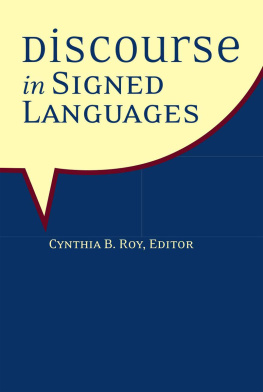
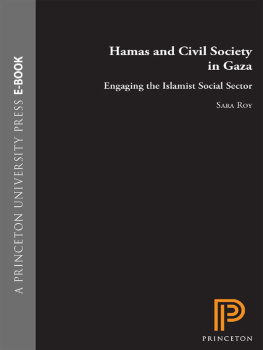

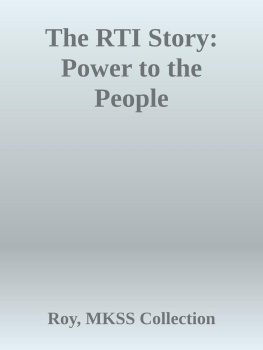



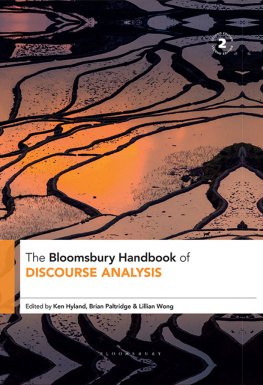
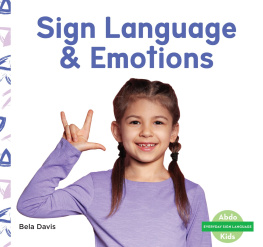
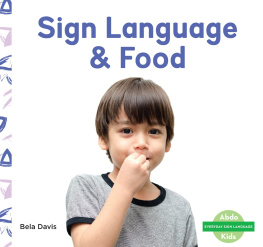
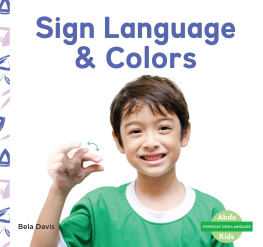
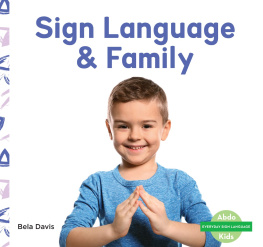
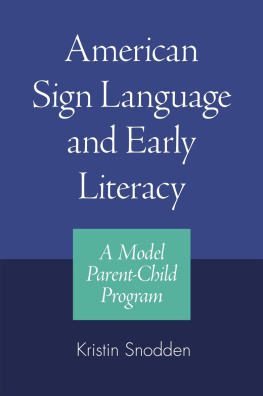


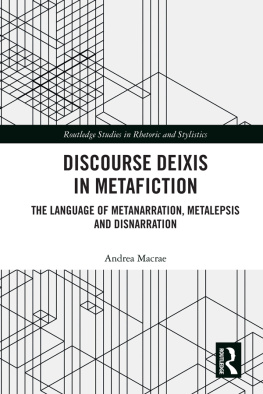
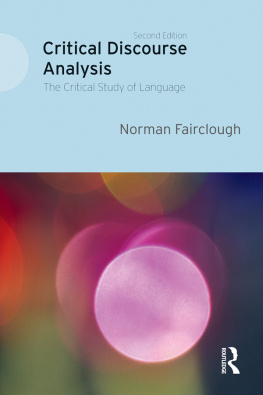
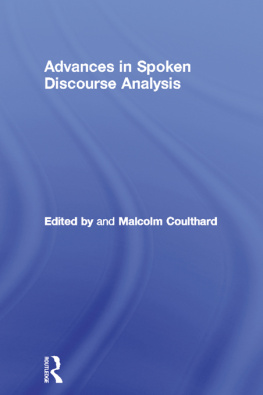


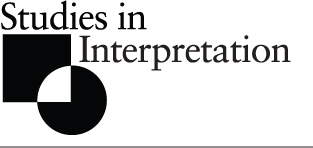
 The paper used in this publication meets the minimum requirements of American National Standard for Information SciencesPermanence of Paper for Printed Library Materials, ANSI Z39.48-1984.
The paper used in this publication meets the minimum requirements of American National Standard for Information SciencesPermanence of Paper for Printed Library Materials, ANSI Z39.48-1984.